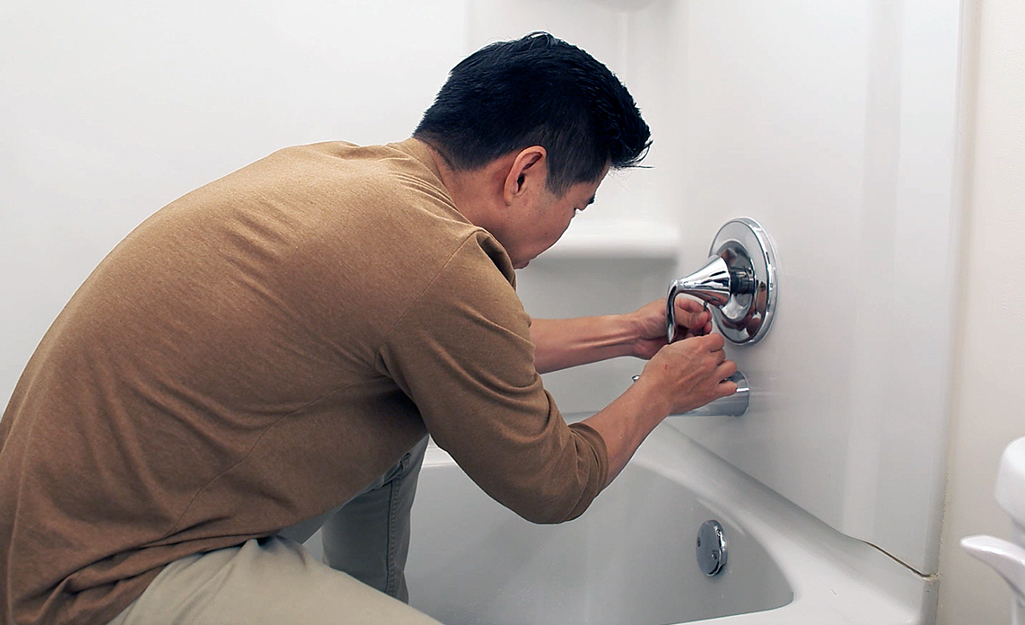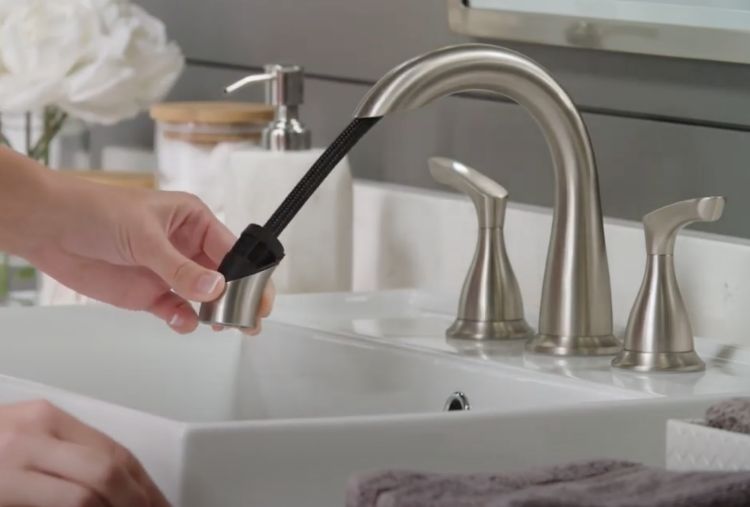Learning the Significance of Resolving a Malfunctioning Faucet
Learning the Significance of Resolving a Malfunctioning Faucet
Blog Article
What are your opinions about Why Are My Faucets Dripping (And Can I Fix It Myself)??

Trickling faucets could feel like a minor inconvenience, however their influence exceeds just the nuisance of the audio. From drainage to sustaining unnecessary economic costs and wellness dangers, neglecting a dripping tap can lead to various repercussions. In this post, we'll explore why it's vital to resolve this typical home issue promptly and efficiently.
Wastage of Water
Environmental Effect
Trickling faucets add significantly to water wastage. According to the Epa (EPA), a single faucet dripping at one drip per secondly can lose greater than 3,000 gallons of water each year. This not only strains water resources but also affects environments and wild animals depending on them.
Step-by-Step Guide to Fixing a Dripping Tap
Tools Called for
Before trying to fix a leaking faucet, gather the needed devices, consisting of an adjustable wrench, screwdrivers, replacement components (such as washing machines or cartridges), and plumber's tape.
Usual Faucet Issues and Their Solutions
Determine the sort of tap and the certain problem triggering the drip. Typical troubles consist of damaged washers, corroded shutoff seats, or malfunctioning O-rings. Describe producer instructions or on the internet tutorials for step-by-step advice on repairs.
Financial Prices
Boosted Water Expenses
Beyond the environmental impact, leaking taps can pump up water costs considerably. The built up wastefulness in time translates right into greater utility costs, which could have been avoided with prompt repair services.
Possible Building Damages
In addition, prolonged leaking can lead to damage to fixtures and surfaces surrounding the tap. Water buildup can cause staining, deterioration, and even structural problems if left neglected, causing extra repair expenses.
Health Problems
Mold and Mildew Development
The constant visibility of wetness from a dripping faucet produces an optimal environment for mold and mildew growth. These fungis not only endanger interior air high quality however additionally present wellness risks, specifically for individuals with breathing problems or allergies.
Waterborne Illness
Stagnant water in leaking taps can come to be a breeding ground for microorganisms and various other microorganisms, enhancing the danger of waterborne illness. Impurities such as Legionella microorganisms grow in stagnant water, potentially bring about serious diseases when consumed or breathed in.
DIY vs. Professional Repair
Pros and Cons of DIY Repair Work
While some may try to repair a trickling faucet themselves, do it yourself repairs include their own set of difficulties. Without appropriate expertise and tools, DIY attempts can aggravate the issue or result in insufficient repair work, prolonging the trouble.
Advantages of Working With a Professional Plumber
Employing an expert plumber ensures that the underlying reason for the trickling faucet is dealt with efficiently. Plumbings possess the expertise and devices to detect and fix tap issues effectively, saving time and lessening the risk of further damages.
Ecological Duty
Specific Contribution to Conservation
Taking duty for repairing leaking taps aligns with broader efforts toward water preservation and ecological sustainability. Every person's activities jointly make a significant influence on protecting valuable resources.
Sustainable Living Practices
By prioritizing prompt fixings and adopting water-saving practices, individuals add to lasting living methods that profit both existing and future generations.
Safety nets
Normal Maintenance Tips
To stop dripping faucets, execute regular maintenance such as cleansing aerators, checking for leaks, and changing damaged parts immediately. Furthermore, think about mounting water-saving gadgets or upgrading to more effective fixtures.
Relevance of Prompt Fixes
Resolving leaking taps as quickly as they're discovered avoids more water waste and possible damage, ultimately conserving both water and money over time.
Impact on Residential Or Commercial Property Value
Perception of Well-Maintained Residential Property
Maintaining a residential property in good condition, including addressing maintenance issues like trickling taps, enhances its viewed worth and desirability among possible customers or tenants.
Impact on Resale Value
Properties with well-kept plumbing components, including faucets, command greater resale worths in the realty market. Dealing with leaking taps can add to a favorable perception during property inspections and negotiations.
Final thought
Dealing with a leaking faucet goes beyond plain convenience; it's an essential action towards preserving water, decreasing financial costs, and protecting health and wellness and residential or commercial property. Whether via DIY repair services or professional assistance, taking action to fix trickling faucets is a tiny yet impactful method to advertise liable stewardship of resources and contribute to a much healthier, extra lasting future.
How to Fix a Dripping or Leaky Faucet
A leaking faucet is one of the most common problems that homeowners encounter, but it being commonplace doesn’t make it any less annoying. The constant drip drip drip of a leaking bathtub faucet, showerhead, or sink tap can disturb your home’s serenity. Left neglected, a dripping faucet can also result in higher water bills and discoloration or mold growth in your sink or plumbing fixtures.
Fortunately, you don’t have to be a trained plumber to know how to stop a dripping faucet. With some basic tools, replacement parts, and a little patience, leaky faucet repair is a breeze. In this article, we’ll explain what causes dripping faucets and how you can fix them.
What Causes a Leaking Faucet?
Kitchen and bathroom faucets come in all manner of designs, but most involve some combination of valves, O-rings, seals, and washers. The O-ring is usually the weakest link, but any one of these pieces can wear down over time. Heat, moisture, temperature fluctuations, minerals, mold, and movement can contribute to warping and corrosion, breaking the watertight seal. This just comes with the territory of being a homeowner. Everything is always subject to wear and tear, and some component parts of your appliances and fixtures need to be replaced on occasion. At least replacement O-rings are cheap!
More rarely, dripping faucets can be a symptom of excessively high water pressure. Were this the case in your home, you would probably notice that the leak is not isolated to one faucet. Water pressure issues are harder to resolve on your own. We recommend contacting a professional plumber if you suspect your water pressure is too high.
How to Fix a Dripping Faucet
Pipe wrench or monkey wrench Allen wrench set Screwdrivers Old towel or rag Shut off the water.
Before you do anything, you need to turn off the water to keep from drenching your kitchen or bathroom. You should find a valve under the sink and against the wall. Once you’ve turned this valve, try turning the faucet on to confirm that the water source has been cut off.
If you can’t locate your local valve for the faucet you’re working on, you can always shut off the water to the house at the main valve. Of course, this will prohibit anyone from using the sinks, showers, or toilets while you’re working on the faucet that’s giving you trouble.
Plug or block the drain.
You’ll be disassembling the faucet and removing some small bits of hardware. Plug the drain with a stopper or rag to avoid the possibility of a small screw falling into your P-trap.
Take apart the faucet assembly.
There are several varieties of kitchen and bathroom faucets, each with its own manner of assembly. For detailed instructions on how to disassemble your faucet, you can refer to the fixture’s manual or contact the manufacturer. If you know whether you have a ball, disc, cartridge, or compression faucet, you can find detailed schematics online.
In general, you need to begin by removing the faucet handles. You might notice a small screw that you’ll need to remove with a screwdriver or Allen wrench. If you don’t see any visible securing hardware, it’s likely hidden under a decorative cap that can be unscrewed or popped off with flathead screwdriver.
Remove each piece methodically, consulting a schematic when necessary. Take notes or arrange the pieces in such a way to make it easier to correctly reassemble the faucet later.
Remove the cartridge.
Once you’ve removed the handles and securing hardware, you should be able to remove the valve cartridge or stem. Some cartridges will slide right out. Other faucet models will require you to loosen a nut with a pipe wrench before you can remove the valve stem.
Examine the exposed hardware.
With the cartridge or stem removed, inspect the component parts. Check the rubber O-rings for wear and tear. Also examine the seat washer for corrosion or other damage. These pieces are usually the responsible parties for a dripping faucet, but it’s worth inspecting the other component parts while you have the faucet disassembled.
Find replacement parts.
Once you’ve identified which faucet component has failed, find an identical replacement. Your local hardware store should have O-rings, seat washers, and other standard components in stock. If you have a luxury or uncommon faucet, you may have to contact the manufacturer for a replacement part.
It’s a good idea to take your old parts with you to the hardware store so you can compare them with the store’s inventory and be sure you’re purchasing the correct replacement.
Reassemble the faucet.
With your new parts in hand, reconstruct the faucet and handles. Don’t be tempted to overtighten screws or nuts. You might think this could create a better seal, but it can instead damage or bend a delicate part of the assembly and create a new problem for you.
Turn on the water and test the faucet.
The only thing left to do is test your work. Unplug the sink, turn the water back on, and try the faucet. Congratulate yourself on a job well done!
https://www.libertyhomeguard.com/how-to-fix-a-dripping-or-leaky-faucet/

I'm certainly very inquisitive about How to Fix a Dripping or Leaky Faucet and I'm hoping you enjoyed our page. In case you liked our article please do not forget to pass it around. I am grateful for your time. Return soon.
Report this page